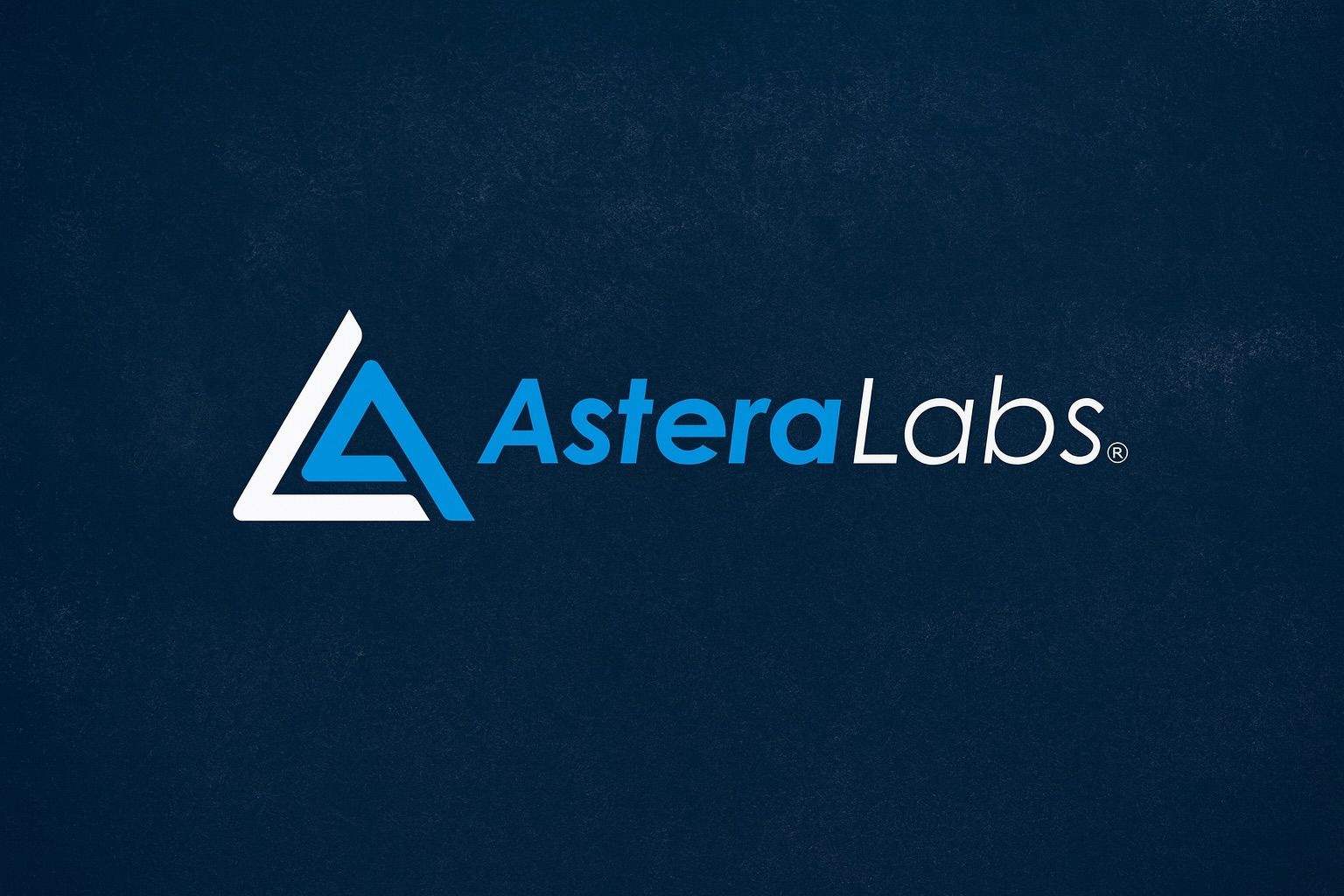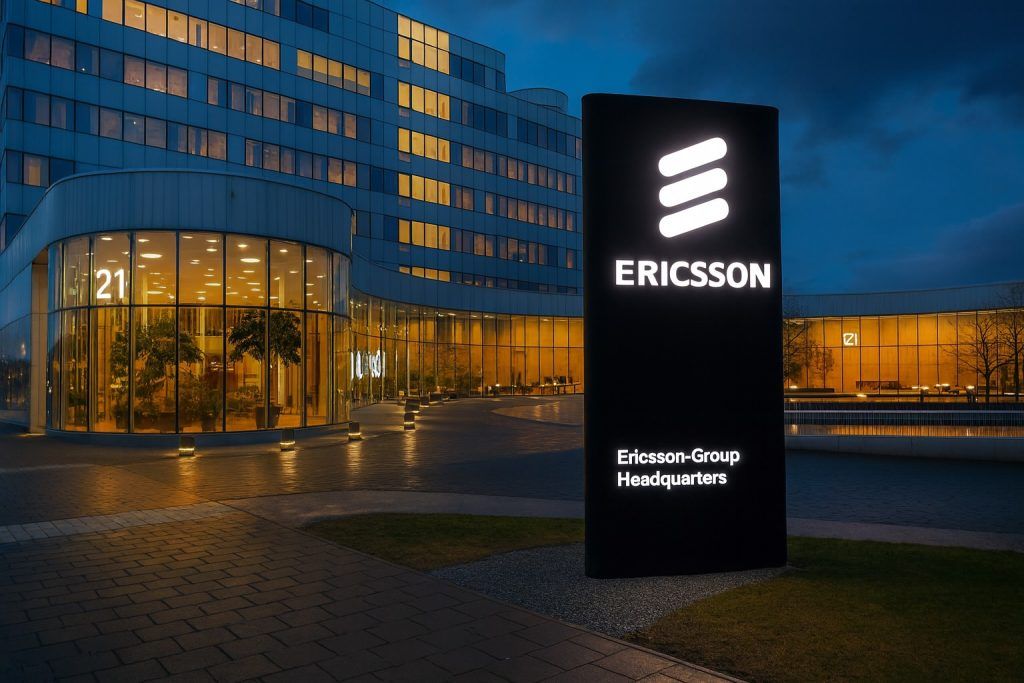- Stock Performance: Astera Labs (NASDAQ: ALAB) has seen a meteoric rise in 2025, with its share price climbing from around $36 at its mid-2023 IPO to a 52-week high near $262 in mid-September [1]. This represents roughly a 250–300% gain year-to-date. (On Oct 14, the stock opened around $184 but plunged ~14%, trading near $170 in late session [2].)
- Strong Q2 Results: In Q2 FY2025 (ended July), Astera reported $191.9M in revenue – up about 150% year-over-year – and non-GAAP EPS of $0.44 [3] [4]. Free cash flow was record-high (~$135M) and cash on hand topped $1.07B [5]. Management guided Q3 revenue to $203–210M with non-GAAP EPS of $0.38–0.39 [6] [7].
- AI Partnerships & Ecosystem: Astera has deepened ties with industry leaders. In May 2025 it announced an expanded NVLink collaboration with NVIDIA to support the new NVLink Fusion AI ecosystem [8]. In June 2025 it forged a strategic partnership with ASIC vendor Alchip, combining Astera’s connectivity chips with Alchip’s accelerators to deliver validated AI-rack solutions [9] [10]. Astera is also a founding member of AMD’s open UALink consortium (for high-speed GPU interconnects), and participated in the Open Compute Project Summit to showcase “rack-scale AI infrastructure” based on PCIe, CXL, UALink, Ethernet and OpenBMC standards [11] [12].
- AI/Cloud Tailwinds: Astera’s products target high-performance AI and cloud data centers. Its Aries retimers (PCIe/CXL), Scorpio fabric switches (P-series, X-series), and Taurus Ethernet modules are designed for the rack-scale AI era [13] [14]. Analysts note Astera is a “picks-and-shovels” supplier as hyperscalers build out next-gen AI infrastructure [15] [16]. The total addressable market for AI/cloud interconnect is forecast to grow from ~$17.2B in 2024 to $27.4B by 2027 [17].
- Analyst Sentiment: Wall Street is mostly bullish. Citigroup raised its 12-month price target to $275 (highest on the street) citing Astera’s role in AMD/OpenAI’s deal and AI growth [18] [19]. Bank of America initiated coverage with a $230 target [20]. Other targets include Morgan Stanley ~$200 and Deutsche Bank ~$200. The consensus “Moderate Buy” rating (15 buys, 8 holds) yields an average target ~$155, implying some near-term downside from current levels [21]. Bears point to the stock’s lofty valuation (Astera trades at ~347× forward EPS [22]) and short-term risk if AI spending slows or competition intensifies [23] [24].
Stock Rally & Market Sentiment
Astera Labs has emerged as a hot AI infrastructure stock in 2025. After its mid-2023 IPO at ~$36, ALAB surged through 2024 and 2025, briefly topping $262 (Sept 18, 2025) before a broader tech sell-off in October [25]. On Oct 14 the stock fell roughly 14% intraday (trading near $170) amid market volatility [26]. Despite pullbacks, ALAB remains up dramatically YTD (over 250%). The run-up reflects extreme market enthusiasm for AI “picks-and-shovels” stocks, but also high valuation concerns. Astera now trades at ~347× forward EPS and ~42× forward sales [27] [28] – higher multiples than peers. This lofty pricing leaves it vulnerable to profit-taking: when Federal Reserve commentary rattled markets in late Sept, ALAB dropped ~19% in a single week [29]. Similarly, technical analysts noted bearish signals after the mid-October selloff [30].
Still, the AI/cloud narrative keeps bulls optimistic. Astera’s leaders and tech analysts emphasize a shift to rack-scale AI infrastructure. “The AI infrastructure landscape is rapidly evolving from server-level architectures to rack-scale systems,” said analyst Patrick Moorhead [31], noting that hyperscalers will invest “billions of dollars” in open-standard, rack-scale solutions. Chief executives agree: AMD’s Lisa Su told attendees at an AI event that “the future of AI is not going to be built by any one company or in a closed ecosystem…it’s going to be shaped by open collaboration across the industry” [32]. Astera is positioning itself squarely in this trend. Its stock has reacted not only to earnings but to broader sector news – for example, Citigroup analysts reported that ALAB is “poised to soar” after the Oct. 2025 AMD/OpenAI deal, since Astera will supply networking for AMD’s new Helios GPU platform [33]. As one Citi analyst put it, ALAB is a “leader in open AI networking ecosystems including UALink” – a key advantage given AMD’s OpenAI partnership [34].
Financial Results and Outlook
Astera’s recent financials have been impressive. In Q2 (ended July 2025) it delivered $191.9 million in revenue, up nearly 150% from a year earlier [35]. Growth was driven by record demand for its PCIe-6 connectivity portfolio (Aries retimers and Taurus cable modules) and ramping shipments of Scorpio P-Series switches [36]. Non-GAAP earnings came in at $0.44 per share, well above Wall Street estimates, and free cash flow was a record $135M [37]. The company exited Q2 with about $1.07 billion in cash and no debt on the balance sheet [38]. Management reiterated aggressive investment in R&D, but also signaled continued profitability: Astera’s operating income jumped to $39.8M (GAAP) on the quarter [39].
Looking ahead, Astera guided Q3 revenue to $203–210M (a sequential rise of ~6–9%) with non-GAAP EPS of $0.38–0.39 [40]. The company expects gross margins to stay near 75% as product mix shifts. Analysts note that the Scorpio X-Series fabric switch (tailored for high-density AI racks) and new Aries 6 retimers are now beginning revenue ramp, supporting this growth outlook [41]. Overall, the consensus among analysts is for Astera’s earnings to keep growing briskly over the next few years [42]. Citi, for instance, raised its estimates in late 2025, citing strong ramp of Scorpio X and overall AI demand [43]. However, caution is warranted: an analysis points out Astera trades at ~42× forward sales and ~347× forward earnings, meaning even slight misses could trigger volatility [44].
Partnerships and Industry Collaborations
Astera’s strategy relies on ecosystem alliances. In May 2025 the company announced an expanded NVLink partnership with NVIDIA [45]. Astera’s Intelligent Connectivity Platform will now include NVLink Fusion solutions to connect GPUs at rack scale. NVIDIA’s Ashish Karandikar praised this move: “NVIDIA’s collaborations with industry leaders enable the NVLink Fusion ecosystem to deploy high-performance AI factories,” he said [46]. This collaboration underscores Astera’s role in NVIDIA’s AI infrastructure roadmap.
Shortly after, Astera and Alchip (Taiwanese ASIC maker) announced a strategic alliance [47]. Sanjay Gajendra, Astera’s COO, explained that combining Alchip’s custom silicon expertise with Astera’s connectivity portfolio will “empower hyperscalers to seamlessly deploy complex AI infrastructure with a multitude of interconnect technologies, shorten time-to-market, and reduce integration risks” [48]. Alchip’s CEO echoed the point, calling the partnership “a powerful resource” that will deliver the complete solutions hyperscalers need [49]. This tie-up is aimed at pre-validating complete AI rack designs (CPUs, GPUs, and accelerators) with Astera’s retimers, gearbox, and switches all working with Alchip’s ASICs.
Astera is also at the heart of emerging open standards. It is a board member of the UALink Consortium (a new AMD-led open standard for GPU-to-GPU/CPU connectivity). Astera executives regularly participate in industry events on “AI Infrastructure 2.0.” At the Oct. 2025 Open Compute Summit, Astera showcased a full rack of heterogeneous components (leveraging PCIe, UALink, Ethernet, CXL, and OpenBMC) working together [50]. CEO Jitendra Mohan framed the vision succinctly: “Our approach is to collaborate, standardize, and accelerate next-generation AI systems. We deliver intelligent connectivity solutions for the AI workloads of today and tomorrow” [51]. Such efforts are designed to ensure Astera’s gear is validated across many platforms – for example, a blog post noted Astera’s Aries and Scorpio chips will undergo interoperability testing in its cloud-scale lab, ensuring plug-and-play CXL and UALink support across devices [52] [53].
These collaborations are helping Astera gain early design wins. For instance, an industry report highlights Astera’s progress with both NVIDIA and AMD: extended NVLink support and active participation in the UALink consortium are positioning Astera as a key interconnect supplier for major GPU architectures [54] [55]. Similarly, Citi analysts observe that after the AMD/OpenAI mega-deal, Astera is strategically placed to supply network fabric for AMD’s future AI clusters [56] [57]. Astera has also joined with major cable and system vendors (e.g. Amphenol, Wistron) to ensure its silicon works with off-the-shelf rack components. Overall, Astera’s partnerships with NVIDIA, AMD, Alchip and others reinforce its positioning in the fast-growing AI infrastructure market.
Innovations and Product Trends
Astera’s product roadmap is aimed squarely at next-gen data centers. Its Aries family (PCIe/CXL retimers and cable modules) and Scorpio switches are engineered for the move to PCIe-6 and CXL-1.1 standards. In Q2, sales of Aries and its Ethernet Taurus modules surged as cloud and custom AI rack projects ramped [58]. The Scorpio P-Series switches (for modular GPU racks) entered volume production in mid-2025, while Scorpio X-Series trial shipments began in Q2 [59]. These high-speed switches allow GPUs/ASICs to connect in large meshes at 200–800Gb/s per link. Meanwhile, Astera’s new Leo controllers (for CXL memory pooling) are in pre-production and expected to qualify later in 2025 [60].
Crucially, these devices plug into a broader shift toward disaggregated, rack-scale architectures. By delivering smart silicon that bridges generations (e.g. gearboxes moving between PCIe5 and 6) and links otherwise-incompatible components, Astera’s chips let hyperscalers mix-and-match CPUs, GPUs, and memory fabrics seamlessly [61]. Its COSMOS software suite then provides telemetry and control across the full rack. Industry analysts note that Astera’s early move into PCIe-6 and CXL, along with its planned UALink products, give it an edge: it “is set for an inflection” as hyperscalers adopt these standards [62]. As Zacks observed, Astera’s front-runner position in PCIe 6.0 and commitment to open UALink could drive new design wins over competitors [63].
In effect, Astera is arming itself to be the “connectivity foundation” of future AI clusters. If data centers increasingly build custom racks instead of generic servers, demand for its “retimers, switches and cable modules” could grow dramatically. Some Wall Street models suggest Astera could earn $1,000 in revenue per accelerator in these scale-out systems [64]. The company’s technology – including innovations like a PCIe active cable module and rack-level management – aligns with broader trends: cloud providers and AI system integrators are moving toward composable, GPU-rich racks rather than incremental server upgrades.
Analyst Commentary and Ratings
Wall Street’s take on Astera is overwhelmingly positive, though not without caution. Major banks see much more upside from here. Citigroup (Citi) bumped its price target to $275 in early Oct, highlighting Astera’s critical role in AMD’s AI networking roadmap [65]. Morgan Stanley raised its target to $200 (Overweight), and Deutsche Bank to $200 (Buy). Bank of America initiated coverage at $230 (Neutral) in mid-October, noting Astera’s potential from the AI scaling trend, though pointing out competitive risks [66]. Smaller brokerages echo this trend: Evercore (Outperform, $215 PT) and TD Cowen (Hold, $200) recently raised targets after the Q2 beat [67] [68]. Overall, a compendium of data shows most analysts rating ALAB as Buy (or Hold) with an average target in the $160–185 range [69].
Citi’s analysis captures the mix of drivers: it noted that after the Oct 2025 AMD/OpenAI pact, Astera “is poised to soar” because its chips will link GPUs in AMD’s forthcoming Helios AI system [70]. Citi’s Atif Malik specifically cited Astera’s involvement in AMD’s UALink (saying ALAB is “a leader in open AI networking ecosystems” for Helios) [71]. Analysts also frequently highlight Astera’s “first-mover” advantage in PCIe-6 and UALink, which they expect to yield design wins [72].
However, some voices urge prudence. The business community is aware of Astera’s rich valuation and concentrated customer base. MarketBeat notes that founder/CEOs have been selling stock (e.g. CEO Jitendra Mohan sold ~91k shares in Aug) [73], and one Seeking Alpha contributor recently started a “sell” stance, warning the stock is due for a pullback given high multiples [74]. Indeed, Astera’s P/S and P/E ratios far exceed most chipmakers (its forward P/S of ~14.7× is below Astera’s own 22.8× median, whereas Marvell trades around 5.9× [75]). If growth disappoints or rivals like Broadcom and Marvell take share, investors could quickly reverse course. For now, though, Astera is widely seen as one of the most promising pure-play AI infrastructure stocks. In late 2025 it continues to feature on “AI stock to own” lists, buoyed by its unique niche [76] [77].
Competitive Landscape in AI Infrastructure
Astera sits in a competitive connectivity space. The dominant players in data-center interconnect have traditionally been Broadcom (which owns Ethernet and Fibre Channel assets) and Intel/Mellanox on networking, plus some traditional cable and switch vendors. Astera’s growth signals a shift toward more specialized high-speed silicon. It effectively competes in the same sectors as Broadcom’s high-speed retimers and Marvell’s networking ASICs, especially in the emerging PCIe/CXL era.
For example, a June 2025 analysis compared Astera to Broadcom and Marvell. It noted Astera’s first-mover advantage in PCIe6/CXL and UALink – features not yet central to Broadcom’s roadmap [78]. Broadcom’s connectivity business is large but more diversified, whereas Astera’s is a “pure play” on next-gen AI rack links. Similarly, a Zacks report pointed out Marvell’s lower valuation relative to Astera [79]. Marvell, with broad networking product lines and large customers in China, trades much cheaper on a forward price/sales basis [80]. This suggests the market still sees Astera as a high-risk, high-reward stock versus more mature rivals.
Nonetheless, Astera has been forging its own path. It has captured design wins with major cloud and AI OEMs that are validating its solutions in new data centers (often under NDA, but likely including hyperscale cloud providers). As one Nasdaq analysis put it, Astera’s recent share gains have “outpaced the broader semiconductor sector” [81]. However, its tiny revenue base (relative to Broadcom’s or Marvell’s billions) means competition is looming: larger incumbents could develop similar CXL switches or bundle connectivity with CPUs. So far Astera is differentiated by its deep software (COSMOS) and ecosystem integrations, but it will have to defend that lead as the AI hardware market heats up.
Sources: Company filings and PRs (Astera Labs press releases [82] [83] [84]), market data and analyst reports (Nasdaq, MarketBeat, TipRanks, Motley Fool, Zacks) [85] [86] [87] [88] [89] [90] [91], and industry commentary [92] [93] [94]. All information is current as of Oct. 14, 2025.
References
1. ts2.tech, 2. www.ainvest.com, 3. www.marketbeat.com, 4. finviz.com, 5. finviz.com, 6. www.nasdaq.com, 7. finviz.com, 8. www.asteralabs.com, 9. www.asteralabs.com, 10. www.asteralabs.com, 11. www.asteralabs.com, 12. www.asteralabs.com, 13. www.nasdaq.com, 14. www.nasdaq.com, 15. ts2.tech, 16. www.asteralabs.com, 17. ts2.tech, 18. www.tipranks.com, 19. finviz.com, 20. finviz.com, 21. ts2.tech, 22. ts2.tech, 23. www.ainvest.com, 24. www.nasdaq.com, 25. ts2.tech, 26. www.ainvest.com, 27. ts2.tech, 28. www.nasdaq.com, 29. ts2.tech, 30. www.ainvest.com, 31. www.asteralabs.com, 32. www.asteralabs.com, 33. finviz.com, 34. finviz.com, 35. www.marketbeat.com, 36. www.nasdaq.com, 37. finviz.com, 38. finviz.com, 39. www.nasdaq.com, 40. www.nasdaq.com, 41. www.nasdaq.com, 42. www.tipranks.com, 43. www.tipranks.com, 44. ts2.tech, 45. www.asteralabs.com, 46. www.asteralabs.com, 47. www.asteralabs.com, 48. www.asteralabs.com, 49. www.asteralabs.com, 50. www.asteralabs.com, 51. www.asteralabs.com, 52. www.asteralabs.com, 53. www.asteralabs.com, 54. www.nasdaq.com, 55. ts2.tech, 56. finviz.com, 57. finviz.com, 58. www.nasdaq.com, 59. www.nasdaq.com, 60. www.nasdaq.com, 61. www.nasdaq.com, 62. www.nasdaq.com, 63. www.nasdaq.com, 64. finviz.com, 65. finviz.com, 66. finviz.com, 67. ts2.tech, 68. finviz.com, 69. ts2.tech, 70. finviz.com, 71. finviz.com, 72. www.nasdaq.com, 73. www.marketbeat.com, 74. www.ainvest.com, 75. www.nasdaq.com, 76. www.marketbeat.com, 77. ts2.tech, 78. www.nasdaq.com, 79. www.nasdaq.com, 80. www.nasdaq.com, 81. www.nasdaq.com, 82. www.asteralabs.com, 83. www.asteralabs.com, 84. www.asteralabs.com, 85. www.nasdaq.com, 86. www.marketbeat.com, 87. finviz.com, 88. finviz.com, 89. ts2.tech, 90. www.nasdaq.com, 91. www.nasdaq.com, 92. www.asteralabs.com, 93. www.asteralabs.com, 94. www.ainvest.com







